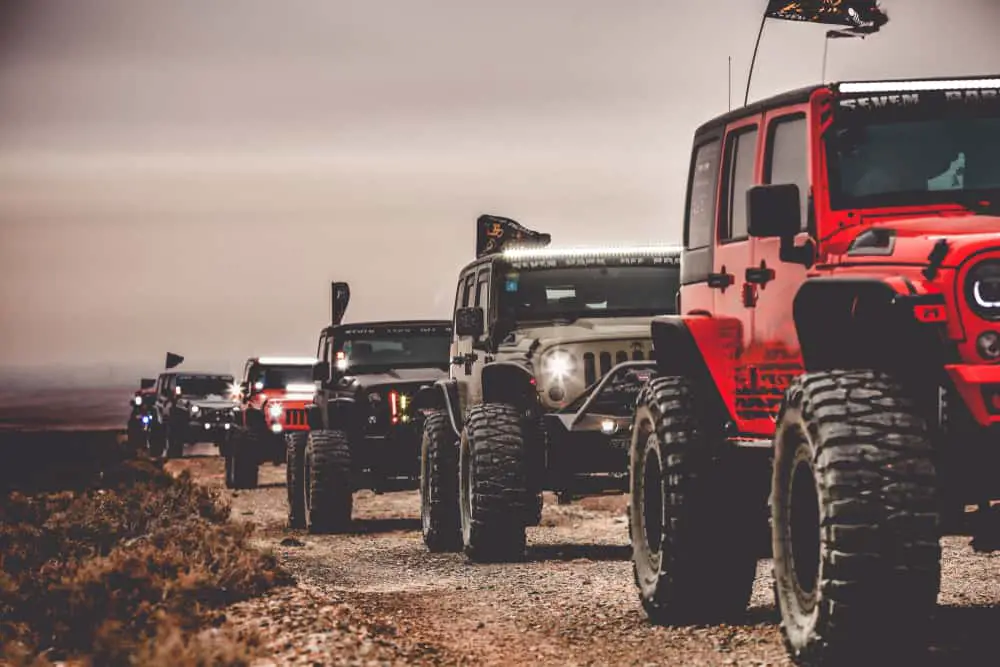
The differential is a set of gears on the axles of vehicles allowing the power from the engine, transmitted via the gears of the driveshaft to the gears on the axle shafts, providing rotational power to the wheels. The junction box where the drive shaft gears mesh with the axle’s shaft gears is called the differential. The differential gear arrangement allows for the wheels on the axle to turn at different speeds.
Off-road driving entails undulating surfaces with poor grip on the tires. Limited Slip Differentials (LSD) are good in these conditions as they allow for the tractive power to be directed to the wheel with the best grip, allowing the other wheel to stop slipping.
There are design three types of limited-slip differentials available in the market: Mechanical Clutch LSD, Mechanical Gear LSD, and Viscous LSD. The most favored by 4×4 experts is the rugged Mechanical Gear type LSD, also called a Torsen Differential.
Limited slip differentials work hard during their operational life, and most manufacturers recommend a replacement or major service after 100,000 miles. The Torsen type LSD is a rugged mechanical design that can be repaired by replacing the worn-out worm gears at a much lower cost than the clutch type or viscous coupling LSDs. Let’s review the various LSD options in more detail?
Why Is The Torsen Type LSD The Best
The Torsen LSD contains worm gears on the driveshaft and worm wheels on the differential casing. The worm wheels are connected to spur gears. When the vehicle is driving in a straight line, the worm wheels push against the worm gears and turn both wheels at the same speed. The operation is similar to an open differential when the torque applied to both wheels is equal.
When the vehicle is cornering, the outer axle will rotate faster than the inside axle. The worm gears are connected via the spur gears, making the wheels rotate at a different speed in corners. If one of the wheels encounters spin due to poor contact between the tire and the road surface, the geared differential will provide more torque to the wheel with grip.
In a limited-slip differential, the torque is biased by the design of the gears and friction points. The Torsen LSD will ratio the torque provided by a design ratio. Assuming the design ratio is 4 to 1, that means that the wheel with grip will get four times more torque than the slipping wheel. Hence, the name limited-slip differential.
The gripping wheel cannot get a 100% of the engine torque transferred to it. If the spinning wheel can still transfer 50 Nm of torque, the wheel with grip will receive 200 Nm of torque in a 4:1 bias ratio Torsen LSD.
The advantages of Torsen LSD versus clutch-type LSD are numerous. The Torsen LSD generates less noise than the clutch type LSD and is easier and less expensive to maintain. Torsen LSD is rugged and predictable to drive in off-road conditions.
The disadvantage of Torsen LSD is that when one wheel lifts off the contact surface and spins freely, there will be no torque transmitted to either wheel. Some torque is required to the worm gears to generate the required thrust force according to the designed bias ratio. The vehicle would require the torque on the other axle to move out of this situation until the affected axle gains some traction again.
The Clutch type LSD can be adjusted to handle this type of scenario. The pressure angle, preload, types of friction plates, and the number of plates can be customized, allowing the clutch-type LSD to be adjusted to suit the surface type.
| Torsen Mechanical Gear LSD | Clutch Type LSD |
| Low maintenance required | Some maintenance needed |
| Low operational noise | Noise higher than an open differential |
| Limited adjustment possible | Adjustable to requirements |
| No torque when one wheel is lifted | Limited torque when one wheel lifted |
| Low cost | High cost |
Why Not Use A Viscous Limited Slip Differential?
Viscous Limited-Slip Differentials make use of viscous oil to provide the friction required to transfer the torque. The viscous liquid performs a similar function to friction plates in a Clutch type LSD. VLSD has some drawbacks in comparison to Torsen and Clutch-type LSDs.
VLSD cannot fully lock up as it requires the rotational speed differential between the two sides to transfer torque. As the viscous gear fluid heats up during operation, the effect of the limited-slip differential will reduce, and it will operate more like an open differential.
VLSD has some advantages too, but these are less important in off-road conditions. They provide very smooth operation and will not have the low-speed mechanical grinding associated with clutch-type LSD in tight cornering.
Which Manufacturers Use Torsen Differentials?
The military Humvee was the first commercial application of the Torsen LSD in 1983. Since then, the Torsen differential has become widely used in performance, rally, and modern four-wheel-drive vehicles. The large four-wheel-drive models such as the Toyota Land Cruiser and Volkswagen Tuareg are fitted with Torsen differentials.
The Volkswagen Group and Toyota seem to favor using the Torsen technology in their large SUV and 4×4 models. The Audi Q5 and Q7 and Porsche Cayenne share the same platform, deploying the Torsen technology. Toyota has also deployed the Torsen differential to their Lexus GS and Toyota 4Runners models. The large Range Rovers and Mitsubishi Pajero SUV and 4×4 models are fitted with the Torsen differential systems.
The modern four-wheel-drive systems use the Torsion differential as a center differential, distributing power between the front and the rear axles. Electronic traction control systems are deployed on the individual axles to manage wheel slip.
Conclusion
The fitment of limited-slip differentials on off-road vehicles has become widespread, and the Torsen LSD is the most favored choice for engineers. However, advancements in differential design have resulted in advanced limited-slip differentials and locking differentials.
The ability to provide differential locking overcomes the one weakness in the design of the Torsen LSD when traction on the wheel is zero. These advanced designs make use of the rugged simplicity and low cost of the Torsen limited-slip differential, with the ability to lock up the differential when traction is lost to one wheel.
References
- https://www.motortrend.com/how-to/1907-choose-best-traction-adding-differential/
- https://fourwheeltrends.com/is-limited-slip-good-for-off-road/
- https://www.whichcar.com.au/gear/4×4-differential-locks-buyers-guide
- https://www.eaton.com/us/en-us/products/differentials-traction-control/limited-slip-differentials.html
- https://auto.howstuffworks.com/differential6.htm
- https://www.sa4x4.co.za/trail-savvy-torsen-diff/
- https://www.carthrottle.com/post/engineering-explained-the-best-kinds-of-differential-and-whats-most-suitable-for-you/
- https://youtu.be/wiq1Rk5wqds


